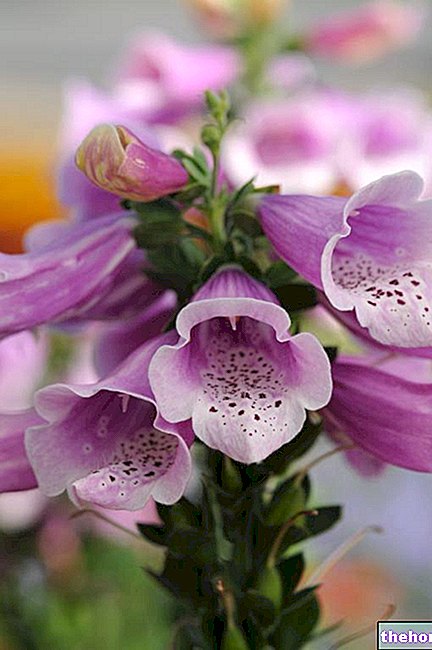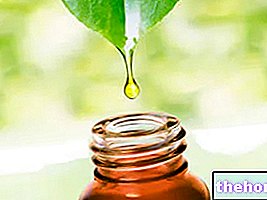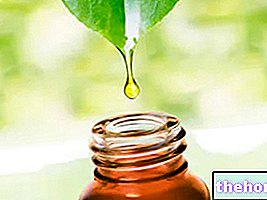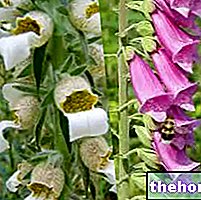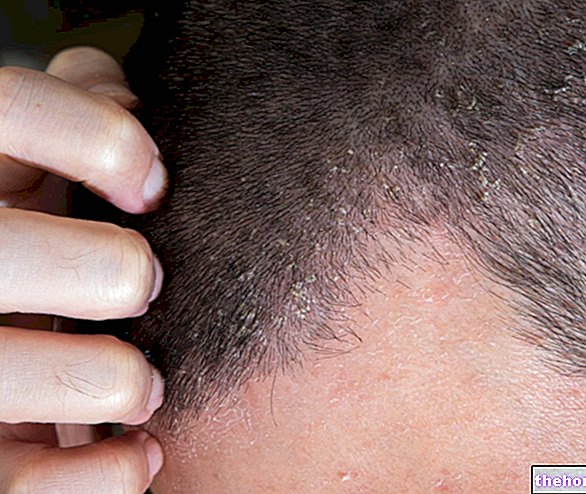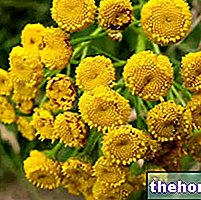it is an annual herbaceous plant, 20-50 cm tall with an erect posture and thin stem, fasciculated root; sessile leaves, bipennatosette, divided into thin laciniae.

Flower heads, gathered in corymbs, carried by a long peduncle.
The flower heads have a diameter of 10-17 mm and have an envelope consisting of 12-17 bracts and a hemispherical or conical receptacle, hairless and hollow inside (unlike Roman chamomile), which gives the internal disc a certain convexity The flower heads have yellow, tubular flowers, hermaphroditic in the center and white, ligulate, feminine flowers in the distal position.
Each tubular flower has a yellow corolla which terminally divides into 5 teeth, and has 5 syngenic stamens and an inferior ovary with a single basal ovule. The ligule of the white distal flowers divides into 3 terminal teeth.
Chamomile blooms from May to August. The fruit is a very small, sub-cylindrical achene, slightly curved and yellowish in color, with a convex dorsal face and a ventral face with 3-5 longitudinal ribs.
The seeds are without endosperm. Pappus absent.
It has a very characteristic, penetrating smell and a bitter taste.
. specific similar (wood sawdust).
Early sowing (July) gives better results than late and very early sowing (spring, this is not recommended because a "possible summer drought would negatively affect the survival of the young chamomile seedlings).
Density: the planting of 20-25 plants per m² is optimal.
Since the seed is small, it is not advisable to bury it after sowing (to avoid secondary dormancy and emergency difficulties), but also a too superficial distribution, which favors the loss of seeds by the wind.
Today for the chamomile the technique of sowing in rows spaced 30-35 cm apart is used; the advantages are the use of smaller quantities of seeds, have more uniform plants and finally, using special seeders equipped with small toothed rollers, make the contact of the "seed" with the ground more intimate, thus reducing the probability of movement by the wind.
Cultural Needs
Chamomile is not very demanding from a nutritional point of view: the ordinary technique does not require fertilization on soils with medium fertility. The potassium intake, in particular, appears to be harmful because it would reduce the essential oil content.
Chamomile is abundant in strong, dry and stony soils, but it adapts badly to acid soils on which it produces a poor essence. It tolerates saline soils and grows fairly well in the presence of high pH.
Adversity
They are not of great concern, even if chamomile is attacked by various parasites.
Mushrooms
- Alternaria spp. which attack the leaves;
- Downy mildew leptosperm which damages the whole aerial part;
- Fusarium spp. which attack the root system
Insects
- Lepidoptera;
- Cucullia chamomillae Schiffe;
- C. artemisiae Hufn. whose larvae damage the flower heads;
- Hemiptera, like Aphis fabae Scop., Brachicaudus helichrysi Kalt. And B.cardui, which cause damage to leaves and stems;
- Helicopter Nysius minor From. that attacks the flower heads;
- Autographia chryson Esqr.
- Stegibium paniceum L. which damages the preserved flower heads;
- Aphids that can be controlled with phosphoric esters or specific aphids.
Weeds
Various herbicides can be used both at sowing and post-emergency.
In some cases herbicide residues, in particular phenoxy derivatives, have been found on the herbal material, the use of which is therefore inadvisable.
- chamomile is made up of dried flower heads, containing an essential oil with alpha-bisabolol, chamazulene, farnesene, apigenin, flavones, coumarins. ) which are generally taken before going to bed due to the mildly sedative action attributed to the plant.
Chamomile in herbal medicine and phytotherapy
In this context, chamomile is used internally in the treatment of inflammatory disorders of the gastrointestinal tract associated with spasms. Externally, on the other hand, it is used to combat inflammatory conditions of the skin and mucous membranes (compresses).
For further information: Properties of the Common Chamomile in Herbal MedicineChamomile in Cosmetics
In cosmetics, chamomile is used for various skin treatments thanks to the calming and anti-inflammatory action - attributable to the mucilage content - which it manages to exert against the epidermis. Besides that, it is also used to lighten hair.
A handkerchief soaked in cold chamomile dabbed on the eyelids upon awakening is an excellent remedy to reduce swelling of dark circles.
Select plant Fir Acacia Acerola Sorrel Yarrow Yarrow Yarrow Aconito Adatoda Garlic Agnocasto Agrimonia Alchemilla Alkekengi Aloe Altea Witch Hazel Ammi or Visnaga Pineapple Andrographis Anemone Pulsatilla Angelica Anise Star Anise Japanese Star Anise Bitter Orange Bitter Areca Arnica Harpagophytum Arpagophyte Artemisia Asteragus Basil Asparagus Asparagus Peruvian Asparagus Asparagus Asparagus Hawthorn Boldo Borage Shepherd's Purse Boswellia Bucco Butea superba Cocoa Coffee Cajeput Calamus Calamus Marigold Camedrio Chamomile Roman Chamomile Camphor Cinnamon Ceylon Maidenhair Capuchin Artichoke Cardamom Cardiac Thistle Asian Thistle Carvi Cascara Cassia Catecu Catha Cabbage Celandine Chicory Centaurea Cinnamon Cypress Celandine Chives Cypress Coca Cola Colchico Combreto Condurango Comfrey Coriander Cranberry Barberry American Chrysanthemum Cumin Turmeric Damiana Digital Dioscorea Drosera Dulcamara Dunalilella Echinacea Eder a Ephedra Elenio Eleutherococcus Helichrysum Evening primrose Horsetail Alfalfa Erica Euphrasia Erisimo Escolzia Eucalyptus Farfara Farfaraccio Calabar bean Fenugreek Fennel Phytolacca Frangola Ash Fumaria Japanese Mushrooms Galega Ganoderma lucidum Garcinia Cambogia Mulberry Gentian Broom Ginkgo Ginkgo Guipana Guipana Gynestra Ginkgo Hibelia Gymnasium Hibiscus Guarulp St. John's Wort Horse Chestnut Ispaghul Hyssop Jaborandi Kava kava Konjac Laminaria Cherry Laurel Lavender Lemongrass Lespedeza Lovage Icelandic Lichen Lemon Flax Lippia Licorice Lobelia Hops Maca Marjoram Maize Mallow Manna Marrubio Marrubio d "water Matè Melaleuca Meliloto American Lemon balm Myrtle Myrama Walnut Nutmeg Walnut vomica Olive tree Meadowsweet Ononide Opuntia Oregano Orthosiphon Nettle Poppy Papaya Parietaria Feverfew Passiflora Chilli Perilla Periwinkle Phyllanthus Plantain Picrorhiza Pilosella Pino Pisci dia Podofillo Polygala Grapefruit Parsley Psyllium Pueraria mirifica Butcher's broom Pygeum Quassia Oak Rhubarb Ratania Rauwolfia currant Castor bean Rhodiola Rosehip Rosemary Rue Willow Sarsaparilla Sage Elderberry Sassafras Sedum Ergot Senna Serenoa Repens Soybean Solidago Tansy Taraxus Tamarind Tamarind Tamarind Tamarind Tamarindo Ursina Valerian Vanilla Mullein Verbena Veronica Viburnum Vinca Pansy Mistletoe Vine Withania Yohimbe Saffron Ginger Pumpkin Select disease Juvenile Acne Rosacea Tinnitus Tinnitus Aerophagia Tendon Affections Afonia Aphthae Algias Functional Halitosis Breastfeeding Allergy Anemia Anguish Anxiety Arteriosclerosis Asthrosis Asthrosis Arthritis Arthritis Men Sex Woman Blepharitis and Conjunctivitis Eye bags Bronchitis Gallstones Kidney stones Salivary stones Baldness Androgenetic Candida Fragile hair Caries Headache Cellulitis Motion sickness Cystitis C limaterio Cholecystopathy High cholesterol Ulcerative colitis Colonoscopy Bruises Hematoma Convalescence Couperose Depression Dermatitis Diaper rash Diabetes Diarrhea Erectile dysfunction Dyslipidemia Dysmenorrhea DyspepsiaVision Hemorrhoids Epistaxis Cardiac Erethism Fever Fibromyalgia Flatulence Phlebitis Gastritis Chilblains Gingivitis Herpes Loss of appetite Urinary infections Influenza Insomnia Hypersomnia Irritable bowel Hypertension Prostatic Prostatic hypertrophy Octopus Jaundice Laryngitis Renal lithiasis Toothache Sore throat Vagination Menonus Osteoporosis Dry skin Periarthritis Piorea Low pressure Prostatitis Psoriasis Cold Breast fissures Anal fissures Gastroesophageal reflux Nasopharyngitis Rolls (abdominal fat) Wrinkles Salmonella Senescence Premenstrual syndrome Sinusitis Quit smoking Overweight Fatty liver Constipation Stomatitis Stress Cough Ulsthesia High blood sickness Verrillas Verrillas Verrillas High bloodworms Herbal properties Abortive tanning Adaptogens Aphrodisiacs Amaricants Analgesics Anesthetics Anorexics Analgesics Antacids Antiallergics Antiasthmatics An tibiotiche catarrh Anticellulitiche anticonvulsant Antidiaforetiche antidiarrheal edematous anthelmintic antiemetic Antiemorroidarie antiphlogistic Antiidrotiche Antinevrotiche Antioxidants antipyretic antirheumatic antiscorbutic Antiseptic antispasmodic anti-uric Aperitive Flavoring Astringent Balsamic Bechiche Capillarotrope cardiotonic Carminative Cathartic caustics Cicatrizant cholagogue choleretic Dyes Decongestants Deodorants purifying Detergents diaphoretic Disinfectants Detox Refreshing Diuretic Exciting emetic emmenagoghe Emollients Haemostatic Energy Epatoprotettrici Eupeptic expectorants Photosensitizers Galactophores Galactofuges Galactogae Moisturizers Immunostimulants Hypertensive Hypnotic Hypoglycemic Hypotensive Irritants Laxative Soothing Narcotic Nerves Odontalgic Nourishing Pectoral Purgative Revulsive Remineralizing Selling Refreshing Sneezing Refreshing Stomatics Stomatics Drugs Tenifuges Tonic Vasoconstrictors Vasodilators Vermifuges Vesicators Vitamins Vulneraries
